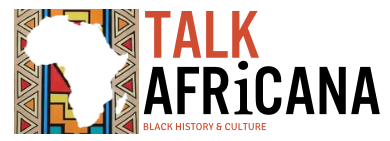Tula Rigaud, known simply as Tula, was an enslaved African man on the Dutch-controlled island of Curaçao who courageously led one of the most significant slave uprisings in the Caribbean during the 18th century. His resistance against the brutal system of slavery made him a martyr and a national hero in Curaçao.

Very little is known about Tula’s early life, including his African origins, but what is known is that he was enslaved on the Knip plantation in the western part of Curaçao. Influenced by the seismic impact of the Haitian Revolution which lasted from 1791 to 1804, Tula had come to believe that freedom was not only desirable but a right. News of the Haitian uprising and the French Revolution had spread across the Caribbean, and enslaved Africans in Curaçao became aware that change was possible.
By 1795, the Netherlands itself had fallen under the control of Revolutionary France and had become the Batavian Republic. Tula used this political shift to argue that the enslaved Africans on Curaçao, now effectively under French-influenced Dutch control, should be freed just as their counterparts in Haiti had been.
The Curaçao Slave Revolt of 1795
On the morning of August 17, 1795, Tula took his stand. Refusing to work, he led a group of 40 to 50 enslaved Africans to confront their owner, Caspar Lodewijk van Uytrecht. Declaring they were no longer slaves, Tula demanded their freedom. Van Uytrecht, unable to stop them by force, referred them to the governor in Willemstad, likely hoping the journey would disperse them or delay the inevitable.
Instead, the opposite occurred. As Tula and his followers marched from plantation to plantation, more enslaved people joined the cause. Jails were broken open, and by the time they reached Santa Cruz, their numbers had swelled to nearly 2,000.
Tula was joined by fellow leaders, and together they freed hundreds of enslaved people, launching coordinated actions against plantation owners. They even managed to capture the commandant of Santa Cruz, van der Grijp, and his guards.
Despite the swelling support and initial success of the rebellion, the colonial authorities moved quickly to crush it. The Dutch sent emissaries to negotiate with Tula, hoping to calm the uprising without full-scale war. Much of what we know about Tula’s words and actions comes from these reports, particularly those written by Father Jacobus Schinck, a Franciscan priest who served as one of the negotiators.
“We have been abused too much, we do not seek to harm anyone, and we are just seeking our freedom. French Negroes gained their freedom, Holland was occupied by the French, then we must be free here”
These are Tula’s words, recorded by reverend Schinck. He continues:
“Sir, Father, do not all the people stem from a common father Adam and Eve? Did I do wrong by releasing 22 of my brothers from their confinement, which they were unjustly thrown into? French freedom has served us as a torment. When one of us was punished, they constantly invoked against us, “Do you seek your freedom as well?” Once I was tied. I cried incessantly ‘mercy for a poor slave.’ When I was finally released, blood ran out of my mouth. I fell on my knees and cried out ‘Oh God Almighty is it your will that we are so mistreated?’ Ah, Father, even an animal is treated better than us. If an animal has a broken leg, it is taken care of.” (A.F. Paula, 1795 de Slavenopstand op Curaçao, 269).
Tula proposed terms for emancipation, but when negotiations fell through, Dutch troops launched a brutal crackdown, sealing the rebellion’s fate.
Eventually on September 19, 1795, Tula and his right hand man, Karpata were captured, ending the active phase of the revolt.

Tula was tortured publicly and executed on October 3, 1795. Alongside him, fellow leaders were also executed. Many other enslaved Africans were massacred during the suppression of the revolt.
Though the revolt was ultimately crushed, it left a permanent mark on the island’s history. Alarmed by the scale of the uprising and fearing future revolts, the colonial government granted granted some rights to the enslaved Africans on the island to prevent another revolt.
Today, Tula is celebrated as a national hero in Curaçao, commemorated annually on August 17. The Tula Museum, located on the Knip Plantation where the revolt began, also honors his memory and tells the story of the rebellion. In 2013, his life was dramatized in the film Tula: The Revolt, bringing international attention to his sacrifice and legacy.
Sources:
https://www.curacaohistory.com/detail/1795-tula

